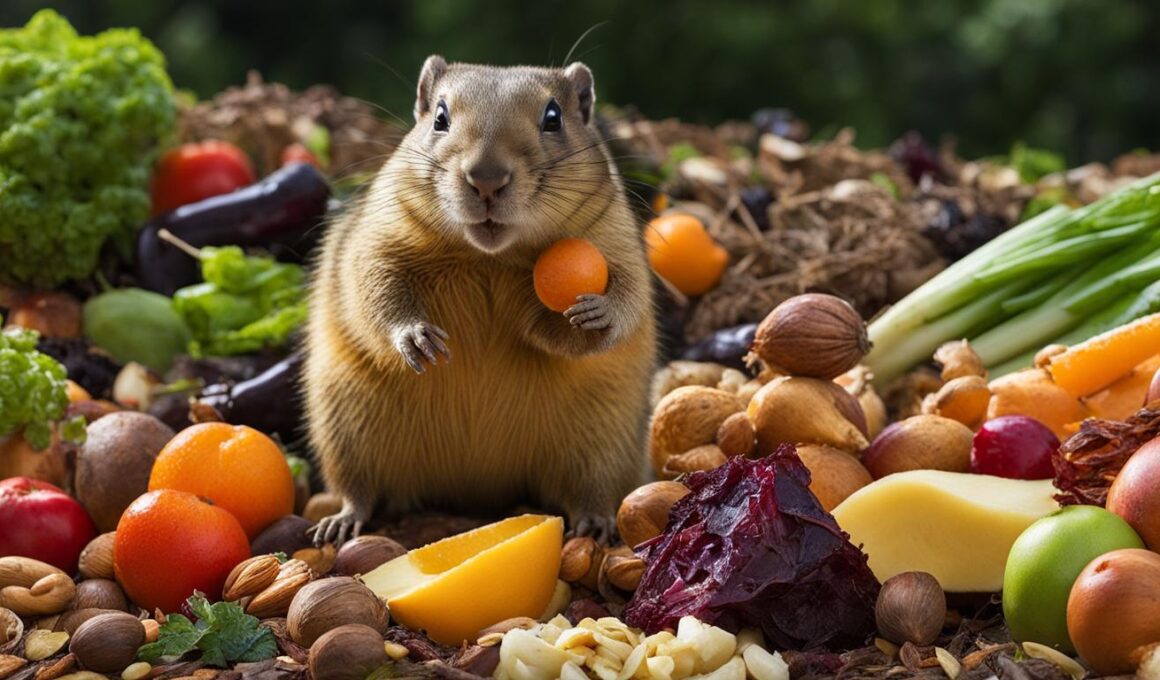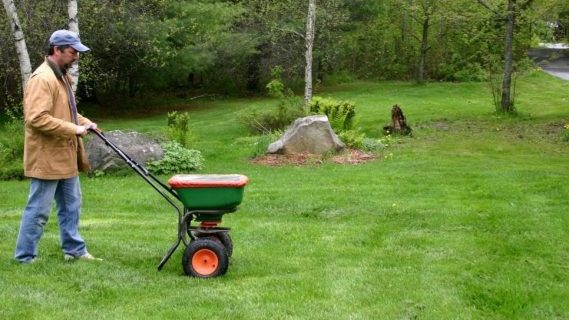Curious about what gophers eat and how their diet affects your yard or garden? Look no further! In this section, we will dive into the fascinating world of gophers’ diets and explore their feeding habits. Gophers, those burrowing rodents known for wreaking havoc on plant roots, have a unique diet that consists primarily of roots and fleshy portions of plants
Gophers are equipped with fur-lined cheek pouches, which they use to carry food and nesting materials. With their large-clawed front paws and sensitive facial whiskers, they are well adapted for their digging lifestyle. Although gophers spend most of their time underground in their intricate burrow system, occasionally, you may spot them feeding at the edge of an open burrow or moving to a new area.
As gophers dig tunnels, they create mounds of fresh soil, which are crescent or horseshoe-shaped when viewed from above. Their feeding habits primarily consist of devouring roots and fleshy portions of plants, but they may also clip small plants near their tunnel openings. These underground rodents can cause significant damage to yards, gardens, and crops, leading to the loss of entire plants and the aesthetic degradation of turfgrass.
Stay tuned as we explore more about the identification, behavior, damage, and management of gophers in the upcoming sections. Discover effective methods to control, trap, or bait gophers and learn how to safeguard your plants and landscapes from their insatiable appetites.
Identification and Behavior of Gophers
When it comes to gopher identification, there are five species of pocket gophers found in California. Among them, Botta’s pocket gopher is the most widespread. These burrowing rodents measure between 6 to 10 inches in length and possess short legs, large-clawed front paws, small ears, and eyes.
Gophers live in an extensive burrow system that can cover an area ranging from 200 to 2,000 square feet. The tunnels they create generally have diameters of about 2 1/2 to 3 1/2 inches. To protect their underground homes, gophers seal the openings of their burrows with earthen plugs. Additionally, they construct short, sloping lateral tunnels that connect the main burrow system to the surface.
Gophers are active year-round and are typically solitary creatures, dwelling alone within their burrows. However, during the breeding season or while females are caring for their young, multiple gophers may temporarily coexist. These rodents reach sexual maturity at around 1 year old and have a lifespan of up to 3 years.
Gophers are herbivorous, primarily feeding on the roots and fleshy portions of plants they come across while digging. The constant need to gnaw on plant material aids in keeping their continuously growing incisors in check. This behavior, combined with their extensive burrow systems, makes them a challenging pest to control.
Understanding the identification and behavior of gophers is crucial for effective management strategies. Let’s dive deeper into how their feeding habits and burrowing activities can cause significant damage to yards, gardens, and crops in the next section.
Gopher Damage and Management
Gophers can cause significant damage to yards, gardens, and crops. They have a voracious appetite and feed on a wide variety of vegetation, including garden crops, ornamental plants, vines, shrubs, and trees. This can result in the loss of entire plants and negatively impact the health and productivity of your garden or farm.
Not only do gophers damage plants by consuming their roots and fleshy portions, but they can also gnaw and damage plastic water lines and irrigation systems. This can lead to costly repairs and disruption of water supply, further exacerbating the impact of gopher infestations.
Gophers also create unsightly mounds on lawns, interfering with mowing equipment and ruining the appearance of turfgrass. These mounds can be a source of frustration for homeowners and impact the overall aesthetic of the landscape.
To mitigate gopher damage and regain control of your yard or garden, it’s important to implement effective gopher control methods. There are several approaches you can take, depending on your preference and the severity of the infestation.
- Trapping: Traps are a traditional and labor-intensive method of gopher control. There are various types of traps available, such as box traps and cinch traps, which are designed to capture and eliminate gophers. Trapping requires patience and regular monitoring to ensure success.
- Baiting: Baiting with toxic baits is a more efficient approach for gopher control, particularly in larger areas. The baits are formulated to attract gophers and effectively eliminate them. It’s crucial to follow the instructions provided with the bait, as improper usage can pose risks to both humans and non-target animals.
- Burrow Fumigation: Another method to consider is burrow fumigation. This involves inserting a device into the gopher’s burrow system and releasing a toxic gas, such as aluminum phosphide, to eliminate the pests underground. Burrow fumigation can be time-consuming and requires caution to prevent health hazards.
When implementing trapping or baiting methods, it’s essential to locate the gopher’s main burrow for optimal effectiveness. The main burrow is a central hub where the gopher spends most of its time and is the best location for trapping or bait placement.
In addition to these control methods, you can take proactive measures to reduce gopher damage. Excluding gophers from valuable ornamental shrubs or landscape trees using wire mesh or hardware cloth can help protect them from gopher activity. You can also create barriers around smaller areas, such as flower beds, using underground fencing or gopher baskets to prevent their entry.
By implementing effective gopher control strategies and taking preventative measures, you can successfully manage gopher populations and minimize the impact of their damage on your landscape.
What Can Gophers Eat Aside from Grass?
Gophers can eat a variety of foods besides grass, such as roots, bulbs, and fruits. They also consume insects like ants and beetles. Additionally, gophers’ diets can include seeds and grains. However, contrary to popular belief, grasshoppers eating habits revealed that gophers do not typically rely heavily on eating grasshoppers as a primary food source.
Conclusion
Gophers are burrowing rodents that pose a significant threat to yards, gardens, and crops by feeding on roots and fleshy parts of plants. However, there are effective methods available to control these destructive pests.
Trapping, baiting, and burrow fumigation are all viable approaches to gopher control. Traps can be labor-intensive but have proven to be successful. Baiting with toxic baits, on the other hand, offers a more efficient option. It’s crucial to accurately locate the gopher’s main burrow to effectively implement trapping or baiting methods.
Aside from these methods, taking proactive measures can help mitigate gopher damage. Excluding gophers from valuable plants and protecting smaller areas, such as flower beds, can help reduce the impact. By understanding gopher diets and implementing appropriate control measures, it is possible to manage gopher populations and minimize their impact on plants and landscapes.









